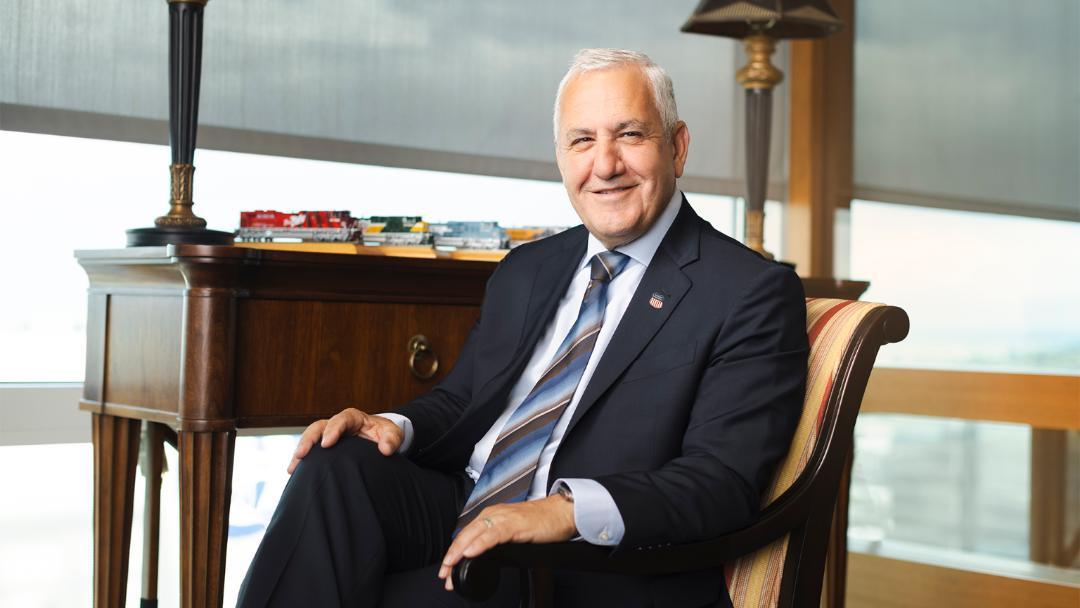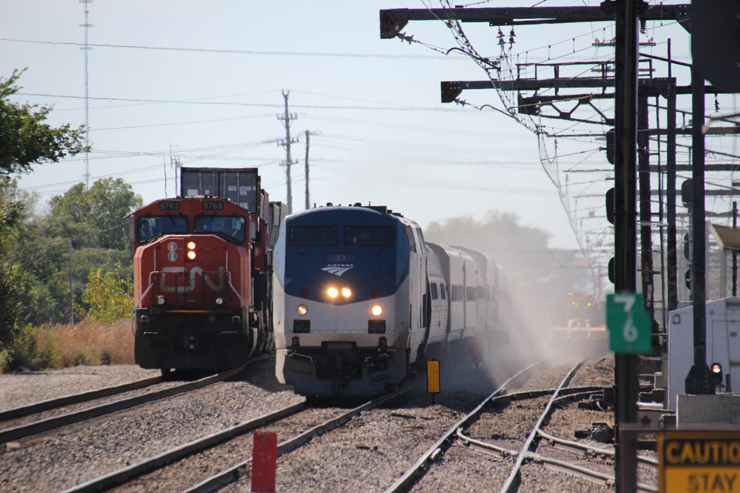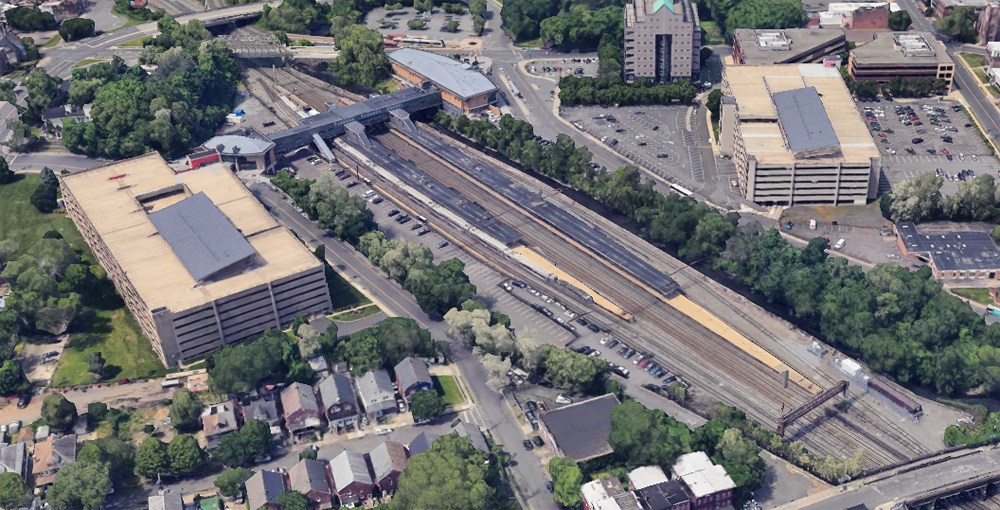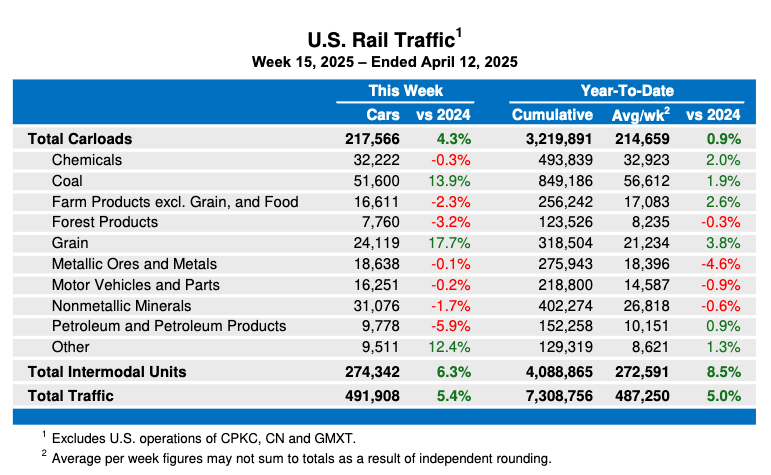
Trains News Wire spoke with Union Pacific CEO Jim Vena after the railroad’s first quarter earnings call this morning. [See Union Pacific profits improve despite drop in coal.] UP introduced a Service Performance Index that showed how well the railroad met customer commitments during the quarter. The Intermodal Service Performance Index was 95%, while the Manifest/Auto Service Performance Index was 87%. The following Q&A has been edited for clarity and brevity.
Q. You have mentioned all along how important consistent and reliable service is to volume growth. Can you explain the difference between the Service Performance Index that was introduced on the earnings call today and trip plan compliance, and how each measure is calculated? The SPI figures show much higher performance than the trip plan figures.
A. Yes, and the best part is year over year we were 14 points up using the SPI measure. So it wasn’t that we compared it to trip plan compliance. The bottom line is with trip plan compliance, all the railroads are the same: We set minimum standards of how long it should take us from when a customer releases a car to go to the first rail yard. And then we set the standard on efficiency for the railroad. So going through a hump yard, we at UP have 8 hours. There are other railroads that have 10 hours, 12 hours, 16 hours. And that changes the way the trip plan is set for the car to the other end. If you look at what people report, they don’t use the base trip plan as a success. They add 24 hours, or some railroads are adding 48 hours to the time that they actually measure against.
Trains: That’s a lot of padding.
A. Go try to explain that to a customer! I’ve got this measure and I’m going to arbitrarily add 36 hours on it and that’s your plan. It’s ludicrous. It takes me back to the first time I was in marketing and tried to go tell a customer that we had great service. He said, ‘What … are you talking about, man? Your service is [awful].’
SPI measures against the customer contract. If you have a black-and-white contract with the parcel people, as we do, we measure that. We said we would deliver at X percent; where are we? There are a lot of customers that don’t have anything specific in their contracts, and what they use is true transit time. So we’ve taken the best service from when they release the car to arrival over the last three years, and that’s the foundation of SPI. We measure against that.
That’s what SPI is. It truly is a measure of what we sold the customer, each individual customer, and we bubble up to the top number. So it’s the way to go. I’m hoping that the rest of the railroads wake up and do the same thing because, I’m telling you, there’s one railroad that went from a 70% TPC to 99%. Really? All they did was change their added hours from 24 to 48.
Q. There’s been a lot of talk about rail gaining market share through truck-to-rail conversions as customers look to reduce their greenhouse gas emissions. In an investor meeting last month, you had a bit of a different take and said that service and price is what customers are looking for and there aren’t too many that are actually making the decision based on carbon footprint. Do you think that we’re still early days in that, especially considering the Amazons and the Walmarts of the world have some pretty aggressive targets for reducing their carbon footprints? Do you think greenhouse gas emissions will become more of a factor in determining how freight moves, or is it just always going to come down to service and price – and all things being equal the greenhouse gas advantage could tip the balance in your favor?
A. Service has to be there as a foundation. But I think as time goes by, it’ll change the discussion. We are substantially more fuel efficient. Two locomotives will move 250, 300 containers. We have a huge advantage, so I think that’ll help us. But I was just saying that at this point customers talk about it. There’s a few, the big ones that look at it, but most of them are going: Give me the price and what’s the service? So we’ll see as it moves ahead. I think it’s an advantage for us.
Q. Railroads have periodically enjoyed strong growth from one or two commodities that were the Big Thing. It used to be Powder River Basin coal as well as intermodal. In the 2010s, it was frac sand, crude oil, and related commodities. And that in turn resulted in growth in plastics traffic, especially on the Gulf Coast. Is there a next Big Thing? And if so what is it? Is it biodiesel and renewable diesel? Is it nearshoring activity in Mexico?
A. I think all those things, and I think we need to not fall in love with that golden star and say, ‘Boy, oh boy, we’re doing great because we’ve got 45 coal trains coming’ and not pay attention to the rest of the market. So we love that we have nearshoring. We love that Mexico looks like it’s growing at a faster rate than the U.S. We love that the U.S. economy still is growing at 2% overall. And we love the franchise that we have. We will get customers to ship more on our railroad. So we need to do all of that. And I would rather have that consistent growth that we can nurture. Biodiesel, yes, it could explode on us, but that’s not the way I’m looking at it. We have the right franchise and right originations with the nutrients that go in to make biodiesel, but at the end of the day, we will react to it as it comes. Remember what happened to coal and remember what happened to frac sand?
Trains: Yes. Here today, gone tomorrow.
A. Exactly. That’s not a sustainable business model, right?














I guarantee you Bill Stephens will remember this interview and revisit Vena in a year or so to see if the promises held true.
I’m a great fan of Bill Stephens, except for today’s column (above). This was a softball interview.
he has no idea what’s going on on his railroad. I can’t tell you first hand that there service has been steadily going down hill. the last thing they want is growth, I watch them turn down 500 cars a month of revenue business.
He knows everything about his railroad. He’s happy the way it is. Then in this interview he lies about it.
Customer service is critical. But try to provide that service to all customers, not just the selected few. That is the responsibility that should come with the benefits of being designated a common carrier.
And that hatchet vena just killed the maintenance department in Denver. The janitors are now doing federal locomotive inspections. Vena is going to cause a derailment bigger then east Palestine because he likes the investors paying him to kill the workforce. FJV
Its good someone is trying to set Customer Service as the priority. Without the customers, no business would exist. Seems like every time the railroads complain that things aren’t going there way, they have forgotten who their customers are and treat Wall Street like they are their customer. (You hearing this Ancora?) In the modified words of Patrick Henry, “Give me shippers or give me death…” because in the end, that will be the result!